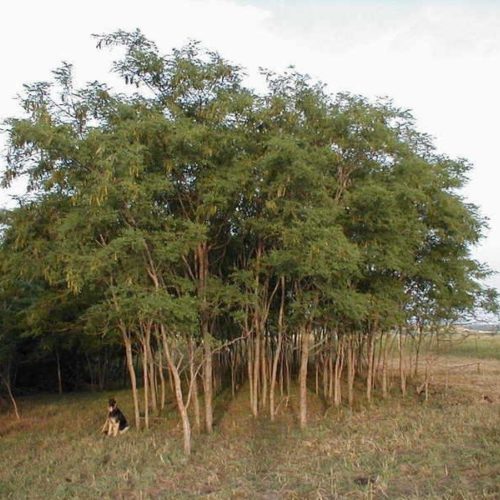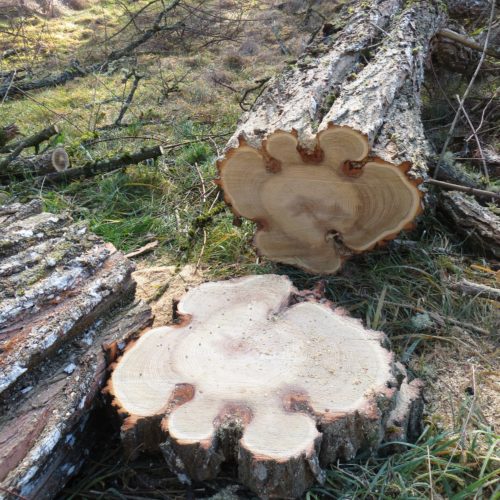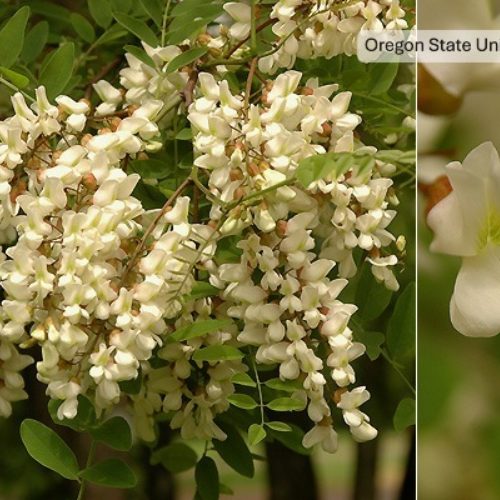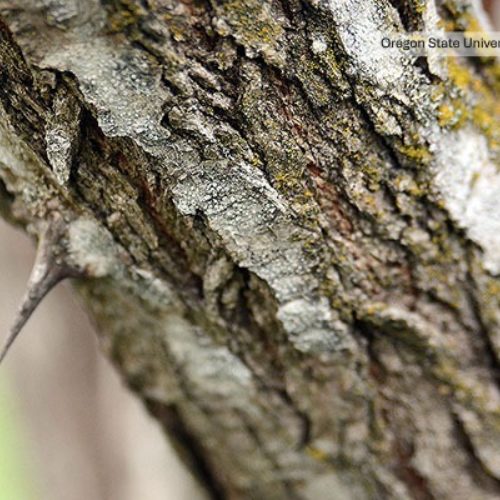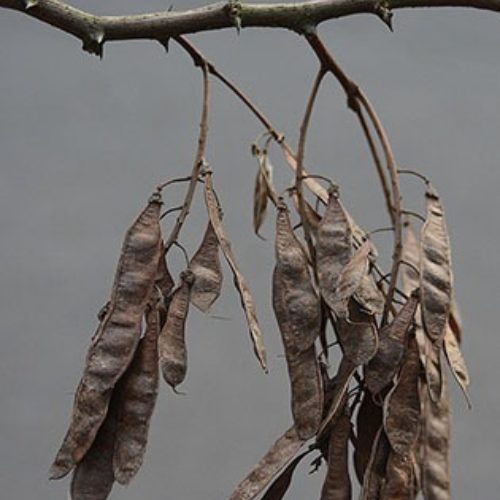Black locust
Robinia pseudoacacia
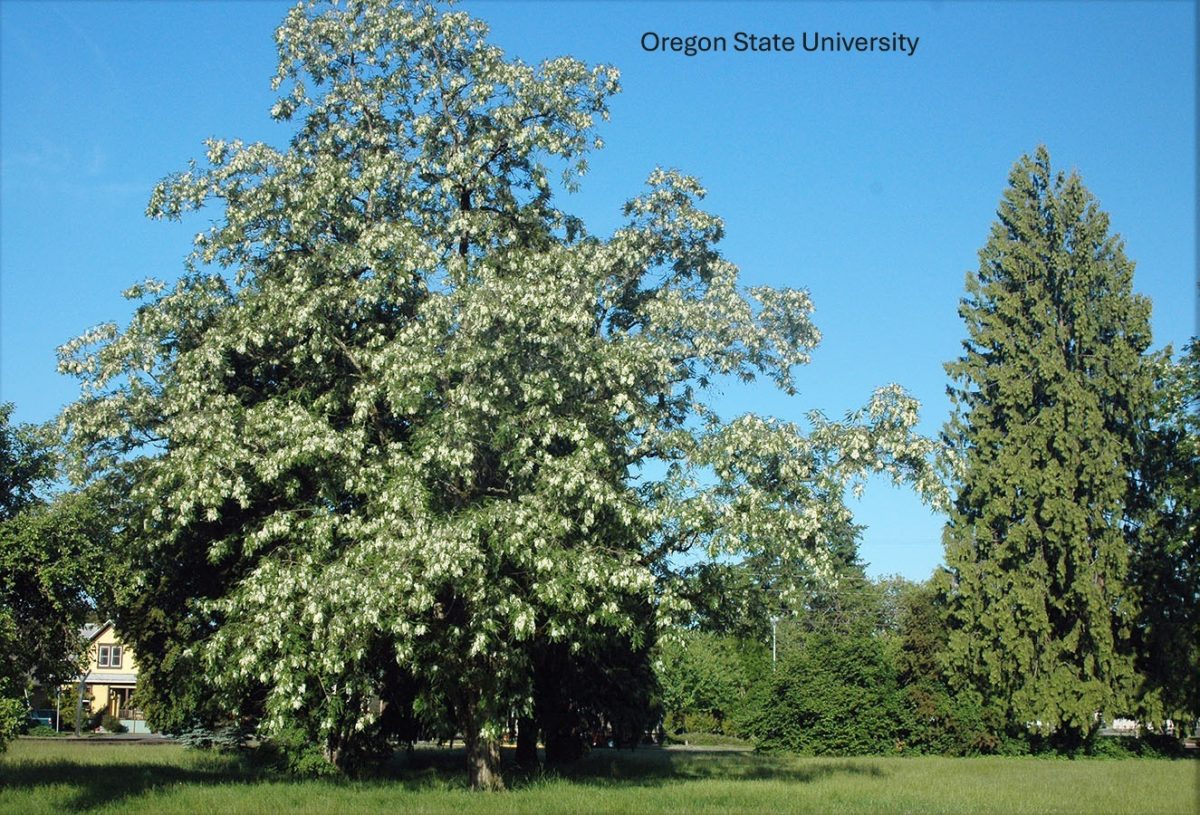
Family: Fabaceae
Other Common Names: false acacia
Weed class: monitor list
Year Listed: 2025
Native to: Southeast United States
Is this Weed Toxic?:
humans, livestock
Why Is It a Noxious Weed?
This plant is on the monitor list - it is not a listed noxious weed in Washington. Please contact the Washington State Noxious Weed Control Board to report locations or for more information.
How would I identify it?
General Description
This fast growing, hardwood deciduous tree can reach 40-100 feet, and can live for up to 100 years.
Flower Description
Flowers grow in large, drooping, flower clusters that can be up to 10 inches long. Each individual flower in this cluster is white or cream colored, and is a typical pea-family shaped flower: a keel-shape of 2 petals at the bottom, two vaguely spoon-shaped petals on top of the keel, and petal forming a "banner" at the top.
Leaf description
The light green leaves are divided into 9 to 19 oval-shaped leaflets.
Stem description
Young bark starts smooth and green-brown and ages to grey and dark brown as it ages and forms deep fissures and grooves. Stems grow long, sturdy, sharp spines/thorns, which can be up to an inch long. These spines are often retained on older branches, but typically are not seen on fully mature trunks.
Fruit Seed Description
A flattened peapod which will start green-red and ripen to brown as it hardens with 2 to 15 flattened seeds inside.
May Be Confused With
Tree-of-heaven (Ailanthus altissima) also have drooping bunches of white flowers, but tree-of-heaven flowers are much smaller and look more like stars than like pea flowers. Tree-of-heaven leaflets have pointed tips and small glands on the bases.
Honey locust (Gleditsia triacanthos) only grow in a few locations in South East Washington. Honey locust leaflets have pointed tips.
Ashes (Fraxinus sp.) leaflets have pointed tips and are generally much larger than black locust leaflets. Ash flowers are pale green-yellow drooping catkins, and not showy flowers. The seeds are papery samaras (winged seeds) with only one seed per fruit.
Mountain ashes (Sorbus sp.) leaflets have serrated edges. Their flowers have 5 white petals, and are generally small. The fruits are round, hard, frequently orange and red, berries. When fully grown, they are only the size of a small tree.
Elderberries (Sambucus sp.) leaflets have serrated edges. Their tight bunches of flowers are composed of many small 5-petaled flowers. They produce small blue, black, and red berries, depending on species. When fully grown, they are usually only the size of a large shrub.
Sumacs (Rhus sp.) leaflets have serrated edges. They grow tight cones of flowers, and the fruits are very small and generally red. When fully grown, they are usually shrub sized.
Walnuts (Juglans sp.) leaflets are generally very lightly serrated, and have pointed tips. The flowers are dangling green catkins, and the fruits are large, hard, rounded, walnuts that start green and age to brown or black.
Where does it grow?
Grows well in open and sunny areas, such as grasslands, shrublands, pasture, disturbed sites, and roadsides. Is drought tolerant, and can grow in dry uplands as well as wetland and riparian areas.
How Does it Reproduce?
Seed and extensive root suckering.
How Do I Control It?
Pull or dig out small and young seedlings and saplings, removing the whole root.
Cutting and felling will typically lead to prolific sprouting, which can be managed with an herbicide follow up.
Maintaining a stand of desired plants, especially shade trees, can keep black locust seedlings from taking hold.
See the handbook on Weed Control in Natural Areas in the Western United States for herbicide and other control information.
For More Information
See our written findings on black locust.
King County's information on black locust.
Burke Herbarium Image Collection black locust page.
Washington State Parks information page on black locust.



